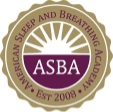New dental appliances for treating apnea and snoring. Are they better?
By Ira L. Shapira, DDS FICCMO
CPAP is the gold standard in sleep medicine for treating sleep apnea. There is a major problem with compliance. That means that even though the CPAP is successful in treating the problem it is not used as intended. Studies have shown that less than half of all patients are successful users of CPAP. Oral appliances are the preferred alternative for many patients and they have a long history of success. The most important factor to consider is that the sleep apnea problem must be treated successfully.
The newest appliance available is the somnomed MAS, and it is very comfortable according to the few patients I have fitted with it. The appliance is only being made in Australia, but the company will soon have a lab in Texas.
But is it better than previous appliances? To answer this question, it is important to understand the basic types of oral appliances and how they work.
The original oral appliances to treat sleep apnea were the tongue retaining device (TRD) and the Equalizer. The tongue retaining device worked by sucking the tongue into a small bulb attached to two mouth guards. It held the tongue forward and did not let it collapse into the airway during sleep. At the same time it brought the lower jaw forward. The equalizer brought the lower jaw forward and could be fitted with extensions to prevent soft palate collapse. It also had tubes that extended outside the mouth that served to break the vacuum that caused airway collapse. The tongue is connected to the lower jaw so it was also pulled forward. Most of the appliances available work by utilizing the same mechanisms.
Early appliances were not adjustable and if they did not work they had to be remade. The NAPA appliance was a fixed appliance (did not allow jaw movement) that was very similar to the Equalizer but brought the jaw forward 75% of maximal protrusion and had a wider oblong tube instead of two small tubes of the equalizer. There are several variations of the TRD currently available.
The next modifications seen were in the mandibular advancement appliances. Instead of being fixed in one position the lower jaw was allowed some freedom of movement but not allowed to drop back. An excellent example of this is the PM positioner and the modified herbst appliances. Both appliances allowed the sleep apnea patient the ability to move their jaw from side to side to some degree and both could be adjusted to bring the jaw forward gradually to further open the airway. The herbst had the advantage that one could also open the mouth while wearing it, but that meant it could fall too far open. The telescopic herbst was an improved version allowing a screw adjustment to the herbst making it easier to adjust but also more fragile. The SAUD appliance was a sturdier version of the herbst that could withstand severe clenching and grinding. From Canada we received the silencer appliance that was more complicated to fit but had excellent research backing it up. It allowed moderate jaw movement but did not allow opening of the mouth.
The most exciting advancement , in the view of this author, was the development of the TAP appliance that was adjustable by a handle that passed through the lips. This meant that titration of the appliance could be done in the lab during (polysomnography) a sleep test. This advancement allowed live titration of appliances in the sleep lab. This was also the first appliance to be used successfully with severe apnea on a routine basis. Unfortunately most sleep patients do not get the benefit of this feature because most sleep techs are not properly trained in appliance titration. A second advancement of this appliance was that the spouses of sleep patients could use the handle as a "volume control" to turn off snoring while their partner was sleeping, which also helped correct their sleep disordered breathing.
Newer sleep apnea appliances are the TAP 2 , the Oaysis and the Somnomed (mandibular advancement splint) MAS. The TAP 2 is a sturdier version of the original TAP appliance that some sleep apnea patients find more comfortable but is not as easy to titrate in the sleep lab or by the bed partner. The Oasys and the MAS both allow much more freedom of movement and prevent the the jaw from dropping back without connection of the appliances. The Oasys has a very small upper component that protects the upper teeth and gums and a larger lower appliance uses the upper as a stop to posterior movement. The MAS has two blocks on the cheek side that serve as stops on the upper appliance and lower fins that engage the blocks to prevent the jaw from falling backwards. Both appliances are adjustable but not titratable during sleep.
The position that the appliance holds the jaw in is the most important part of appliance therapy. In my opinion, none of the newer appliances are as successful as the TAP 1 in locating this position. However once this position is found, you can use any appliance to maintain it. Now, comfort is a primary issue if it means the sleep apnea patient uses the appliance.
You can find more information @ www.dentalsleepmed.org, an excellent site listing dentists who make and use oral appliances. I recommend working with a diplomat in the academy if possible. An excellent resource is quietsleep.com, where pictures of many appliances are available.






